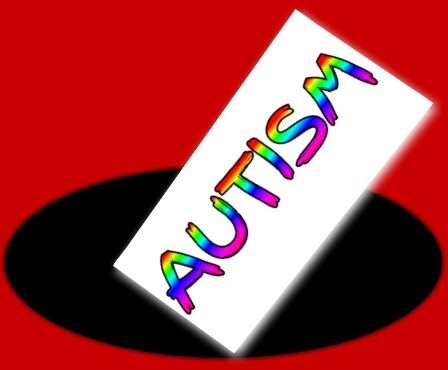
Introduction
Why are video games one of my favourite activities? Why am I so good at them? And how have they been beneficial for my autism and my well-being?
This blog post explains how video games have had a positive influence on me, their beneficial effects to autism, and how video games have helped to shape my life over the years. 🕹
Benefits of video games for individuals with autism
Video games can be beneficial to autism in a variety of ways. Here are some of the ways that individuals with autism like myself can benefit from video games in a positive way:
Helping individuals with autism learn
Because video games take place in a virtual environment that is highly controlled and interactive, video games can be used to help many individuals with autism easily learn. Learning through educational specific software is also helpful for individuals on the autism spectrum. As autism is a complex neurological and developmental disorder, not every individual will learn the same way when it comes to education via video games, and some will always find it harder than others. 🧩
From the age of 8, I used a jungle-themed educational video game on the PC to learn how to type on the computer keyboard and to learn maths as part of my homeschooling education. This was quite hard at first until I eventually got the hang of it.
At the age of 6 years, I learned about the four seasons from a PC video game centred on teddy bears. Simply clicking on the scenery outside would change the aesthetical appearance of the seasons, from a blossoming Spring to a snowy Winter. These seasons were based on the northern hemisphere and I really used to enjoy seeing this visual effects of the different seasons and the characters reactions to the change in the environment. 🍁 This also taught me how to dress appropriately for each season and also to look for the joy found in each season. ☀️
Managing stress in individuals with autism
Another benefit of video games is stress management in individuals with autism. A video game can help to reduce stress from sensory overload by focusing the individual on the virtual environment and immersing the individual in the game, thus reducing the sensory overload from the surroundings through distraction.
For example, video games are a crucial part in the managing of my stress in an overwhelming situation that would otherwise cause me to have a meltdown, e,g: hospital waiting rooms, traffic jams, restaurants, cafe’s, and car travel. Through the video game’s immersive storytelling and environments, (like detailed 3D graphics and cut-scenes) the sounds of the game distracts me from the external sensory overload of the real environment. 🕹
The only issue with using video games in public is the sound from the game, as I usually have to put it on silent or a very low volume to avoid disturbing the people around me.
Social interaction
Video games can also teach individuals with autism what social interactions are.
An example of this type of game is the Sims 1 and it’s sequels. These life-simulation video games can help with teaching about social interactions and the way they are perceived by other Sims and society.
The “Hygiene” bar (called a Need in the game), is a visual representation of what influences other Sim’s reactions to that particular Sim individual. If this Need gets too low, green vapours start appearing from that Sim’s body as a visual representation of the body odour. This caused other Sims to react with disgust when in close proximity to that Sim, and this taught me the importance of personal hygiene and self-care from the perception of others.
The game also taught me the differences in personalities which occur in both animals and people through the visual representation of the Sim characters. If your Sim gives the cat a hug, this usually will raise the friendship points between the Sim and the cat, but a cat with an aggressive personality may not enjoy the interaction, and this lowers friendship points. 😺 (Gaming for Good: Healthy Habits for Autistic People, 2023, September 12)
Multiplayer and online communities
Many video games often have a multiplayer option which allows you to either connect to the internet, or connect to nearby game consoles of the same type or similar type (called local multiplayer). Multiplayer can be beneficial for individuals with autism in facilitating friendships between players and building a community together.
Here are some of the skill-sets I have learned through a positive multiplayer community experience:
- Respect other people’s boundaries, even in the virtual world.
- Never try to participate in griefing (blowing up other player’s buildings or sabotaging attempts at building something, or their experiences) no matter how tempting it may be, as it is anti-social behaviour when it is not the intended purpose of the game.
- Always report players that cheat multiplayer components of the game and the system to gain a competitive advantage. This enables a more positive experience for those playing by the rules. The reporting of toxic activity also enables a better experience for everyone using the game.
- Never participate in toxic behaviours or hate-filled message chats/voice chats. Never use all capitals for chatting in the game, as it may be seen as shouting.
- Follow all rules that the video game provides to give others and yourself a fun experience.
- When chatting with others, check your message and review it before sending to other players.
- If you are a parent or legal guardian, always supervise children who are under the age of majority in your country whether it be playing video games or online play. Set screen time limits for bedtime and tasks like schooling. When it comes to ratings higher than the age for young children like G (AU), E (U.S), or 3 (EU) for example, parental supervision is recommended for young children. Always supervise online play for children under the age of majority.
- Be careful when using voice chat, as you don’t really know who is on the other side. (I personally choose not to use this feature.)
- Stop playing when frustrated.
Tips for maintaining your health when playing video games
Playing games is not without it’s share of health issues though. To reduce the likelihood of health problems occurring from video games, it is advisable to:
- Take a 10min break every hour
- Use a comfortable, ergonomic office chair
- Sit upright to avoid a hunched posture
- Avoid excessive screen brightness
- Play in a well-lit room
- If you have photosensitive epilepsy, always consult with your doctor before playing games
- When taking breaks, save your progress (many modern games now have an autosave feature, but it’s still highly recommended to use manual saving)
- When finished playing with the game, always put the disc or cartridge back in it’s respective case. Failure to do so may lead to the video game getting lost or scratched. (This applies only to physical game media)
- Stop playing when unwell or tired.
When did you first start playing video games?
I first started to play video games back in 1999 when I was 4 years of age. The first PC video game I played was Croc 2, and I became very obsessed with the game for many years until it stopped working due to constant overuse. Croc 2 remains a nostalgic memory of my early childhood and the struggles of frustration with video games. 🐊
The image below is what a typical computer from the late 90’s would have looked like, and was also used for a wide range of purposes:

Notice the “CRT” display in the centre, the mechanical keyboard and the “CPU tower”? This image was made with the 3D modelling software Blender (version 4.0.1). Copyright © Zachary Wright.
What video games and consoles did you play?
I have played a very large amount of video games and consoles over the years with most of them being handheld consoles.
The list that I have written below, should give an idea of just how many games and consoles I have played over the 25 years of playing games.
Games:
- Croc 2 (PC/PlayStation 1)
- Bears (PC)
- The Sims 2 (PC/Game Boy Advance)
- The Sims 3 (Mac)
- The Sims (PC)
- SimCity 4 (PC)
- Harry Potter and the Philosopher’s Stone (PC)
- Harry Potter and the Chamber of Secrets (PC)
- Oceans (PC)
- Letterland (PC)
- Super Mario 64 DS (Nintendo DS)
- SimCity Creator (Nintendo DS)
- Spore (PC)
- Animal Crossing: New Horizons (Nintendo Switch)
- Nintendogs (Nintendo DS)
- Pokemon (Game Boy Pocket, Game Boy Advance, Nintendo DS, Nintendo DSi, Nintendo 3DS, Nintendo Switch)
- Ratchet and Clank 2 (Playstation 2)
- Rascal (Played on PlayStation 2 through backwards compatibility (PlayStation 1)
- Sitting Ducks (Game Boy Advance/PlayStation 2)
- Super Mario 64 (Nintendo 64)
- Banjo-Kazooie (Nintendo 64)
- Diddy Kong Racing (Nintendo 64)
- Super Mario 3D All-Stars (Nintendo Switch)
- Wii Sports (Wii)
- Age Of Empires II: The Age Of Kings (Nintendo DS/PC)
- The Legend of Zelda: Ocarina Of Time 3D (Nintendo 3DS)
- The Legend of Zelda: Majora’s Mask 3D (Nintendo 3DS)
- The Legend of Zelda: Breath of the Wild (Nintendo Switch)
- The Legend of Zelda: Tears of the Kingdom (Nintendo Switch)
- Spyro: Reignited Trilogy (Nintendo Switch)
- Ty The Tasmanian Tiger (PlayStation 2/Nintendo Switch)
- Hogwarts Legacy (Nintendo Switch)
- Nintendogs + Cats (Nintendo 3DS)
- Super Mario 3D Land (Nintendo 3DS)
- World of Zoo (Nintendo DS)
- Nancy Drew (PC video game series)
The list below shows most of the video game consoles that I have played over the years. Not every one of them, but close:
Consoles:
- Game Boy Advance SP
- Game Boy Pocket
- Nintendo DS
- Nintendo DSi
- Nintendo 3DS
- Nintendo Switch
- Sony Playstation 2
- SEGA Megadrive (SEGA Genesis is also known as SEGA Megadrive in Europe, Australia and New Zealand)
- Nintendo DS Lite
- New Nintendo 3DS
- Nintendo 2DS
- New Nintendo 2DS
- Sony PSP (PlayStation Portable)
- Wii
- Nintendo 64
This is all the video games and consoles I have played so far.
Video games then and now: A short comparison of media types
In the early 2000’s, CD’s and other physical media were the dominant types of media used for video games. Since CD’s and other physical media were not revocable, they could be owned for a lifetime unlike with today’s digital media.
Digital media on the other hand, is software that requires an internet connection to download. The problem with digital media, in my opinion is how it is made to be revocable, as you’re only buying the rights to use the game in most cases. This means that the software could disappear at any moment in time, effectively erasing ownership.
The image below is an example of what video games looked like on a CD-ROM. The blank CD-ROM seen here represents the various media types you may have seen, from DVDs to Blu-Rays and of course, video games.

A little fun fact about CD-ROMs and myself:
A CD-ROM can spin very, very fast, at a maximum speed of 23,000 RPM (Revolutions per minute) before the CD-ROM will spin itself to pieces from centrifugal forces overwhelming it’s structure. Due to my obsessive compulsive disorder, I find these CD-ROMs spinning themselves to pieces hilarious. 😆 It is not recommended to do this for safety reasons.
Drawbacks of playing video games
Playing video games does have some downsides for me, and these are listed below, such as:
- Can cause me to lose track of time. (The “time flies” kind of effect)
- Going to sleep too late.
- Can cause me to miss work (in my case, blogging).
- Can cause me to miss my daily walk.
- Can cause me to neglect tasks in my routine that I was supposed to be doing.
- Frustration.
- Can cause day/night reversal. (sleeping during the day and awake all night) Therefore, missing out on attending to my responsibilities.
Because of how fast time goes by, the clock animation shown below depicts how fast time can appear to speed up for me when playing video games.
Princess Lilli Lilac

Although Lilli does not participate in any of my play sessions while I use video games, she does sleep nearby, keeping me company. By doing this, she also helps to keep me calm and relaxed. We have been inseparable since the day we first bought her in 2011, and we love her very much! 💜
Conclusion
Hopefully you have learned a lot about how video games have shaped my life and the beneficial effects they can have on autism. See you on the next blog post! 🗞
References
Autism Awareness Australia. (2023, September 12). Gaming for good: healthy habits for autistic people. https://www.autismawareness.com.au/aupdate/gaming-for-good-healthy-habits-for-autistic-people
